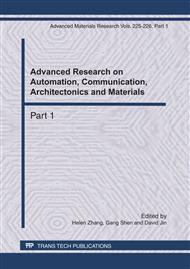p.1092
p.1096
p.1100
p.1105
p.1109
p.1115
p.1120
p.1125
p.1129
An Algorithm of Synchronous Mining Frequent Neighboring Class Set with Constraint Class Set
Abstract:
Due to these reasons that present frequent neighboring class set mining algorithms are unsuitable for extracting any length frequent neighboring class set with constraint class set, this paper proposes an algorithm of synchronous mining frequent neighboring class set with constraint class set, which is suitable for mining any length frequent neighboring class set with constraint class set in large spatial database. The algorithm creates mining database through digitization method, and then gains candidate frequent neighboring class set with constraint class set via synchronous search strategy, namely, it uses computing (k-1)-subset of k-non frequent neighboring class set with constraint class set to generate candidate frequent neighboring class set, meanwhile, it also uses connecting (l+1)-superset of l-frequent neighboring class sets to generate candidate frequent neighboring class set with constraint class set, it only need scan database once to extract frequent neighboring class set with constraint class set. The result of experiment indicates that the algorithm is faster and more efficient than present algorithms when mining any length frequent neighboring class set with constraint class set.
Info:
Periodical:
Pages:
1109-1112
Citation:
Online since:
April 2011
Authors:
Price:
Сopyright:
© 2011 Trans Tech Publications Ltd. All Rights Reserved
Share:
Citation:


